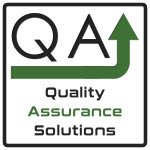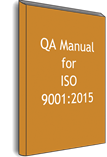TPM
Total Productive Maintenance Overview
To better understand TPM. first consider the major causes of equipment breakdowns:
- Failure to maintain fundamental machine requirements, such as housekeeping, oiling, tightening bolts, and so on
- Failure to maintain correct machine operation conditions, such as temperature, vibration, pressure, speed, torque, and so on
- Lack of operator skills causing incorrect machine operation
- Lack of maintenance crew skills causing maintenance errors
- Physical deterioration of bearings, gears, fixtures, and so on
- Equipment design deficiency such as material construction (the machine just isn't strong enough to survive daily use), dimensions (the machine works well within certain parameters, but is less robust outside certain settings), and so on
- Misapplication of equipment, such as using light duty cycle equipment for a medium/heavy duty cycle task.
TrainingKeeper Software. Keep, organize and plan all your employees' training and activities. Software includes multi-user support with reports, certs, and calendars.
TPM and OEE
After determining the Overall Equipment Effectiveness (OEE) of a machine or process, the next step determines why the machine isn't 100% and then work towards the 100% goal.
OEE is made up of three elements as per the equation:
OEE = %Uptime x %Pace x %Quality
After knowing the level of uptime, pace, and quality, to improve, you then focus lean sigma projects towards each stream. This provides immediate breakthrough improvement in each area. Many times it is difficult to sustain the equipment improvements without implementing TPM too.
Logistics
Total Productive Maintenance should be undertaken as an operations-wide initiative and should be resourced as such. It should have an executive champion, usually a Vice President of Operations or similar and an accountable hierarchy of resources to plan, structure, and implement change.
Commonly multiple Total Productive Maintenance Teams are active in a business at any one time working systematically through key equipment issues to raise the OEE of the facility.
Snap Sampling Plans! software combines all the key industry standard attribute sampling plans into one place.
With over 10,000 sampling possibilities, Snap Sampling Plans! guides you in selecting the correct AQL sampling plan.
Total Productive Maintenance Roadmap
Step 0. It is the bare minimum responsibilities of any operators and maintenance crew to conduct cleaning, inspecting, and repairing the area and equipment. Items not fixed immediately should be red tagged. Create a responsibility chart for these items.
Step 1. Implement Preventive Maintenance. Prevent breakdowns from occurring through a regular maintenance program that fills fluid levels, replace filters, and so on. Create cleaning and lubrication standards and a schedule that identifies responsibilities for operators and maintenance personnel.
Step 2. Implement Corrective Maintenance. This makes Preventive Maintenance easier and user-friendly by eliminating problem sources, such as leaks, and improving access to equipment for cleaning, inspecting, and repairing it. Using central lubrication systems are a common approach here.
Step 3. Implement Breakdown Maintenance. Identify the primary causes of machine down-time and create recovery plans that reduce the amount of time it takes to repair a machine after a breakdown. Use Rapid Changeover (SMED) approach here. Create a standard approach to rapidly bring the equipment back on-line.
Step 4. Implement Maintenance Prevention. Buy or design equipment so that it needs minimal maintenance. Identify the key maintenance risks and work to eliminate them. Utilize more advance technology, such as replacing standard bearings with sealed bearings or traditional cutting heads with more exotic alloys or better still lasers.
8D Manager Software with 8D, 9D, 5Y and 4M report generator. Your corrective action software for managing, measuring, and reporting issues.
Step 5. Implement Predictive Maintenance. Identify the key Xs that cause machine failure using the Lean Sigma Y = f(X1,X2,...,Xn) approach, then using technology to track those Xs to predict machine failure. Xs typically come from heat analysis, vibration tests, electrical tests, dimensional measurements, and so on.
Step 6. Implement thorough Scheduled Maintenance The previous steps give a detailed understanding of the Xs that drive failure and the systematic methods to bring equipment back online after failure or during routine maintenance. Thus, it is possible with this information to regularly schedule machine downtime with the production department.
TPM is certainly not a simple undertaking, but nonetheless it is crucial to most operational excellence initiatives. The preceding roadmap is not nearly enough to commence such an initiative, but hopefully gives an indication of the items involved and the value of such an endeavor.
Lean Manufacturing includes Total Productive Maintenance
|
Quality Assurance Solutions Robert Broughton (805) 419-3344 USA |
 |
|
Software, Videos, Manuals, On-Line Certifications | ||
|
450+ Editable Slides with support links | ||
|
Corrective Action Software | ||
|
Plan and Track Training | ||
|
AQL Inspection Software |
|
Learn and Train TRIZ | ||
|
Editable Template | ||
|
Templates, Guides, QA Manual, Audit Checklists | ||
|
EMS Manual, Procedures, Forms, Examples, Audits, Videos | ||
|
On-Line Accredited Certifications Six Sigma, Risk Management, SCRUM | ||
|
Software, Videos, Manuals, On-Line Certifications |
































